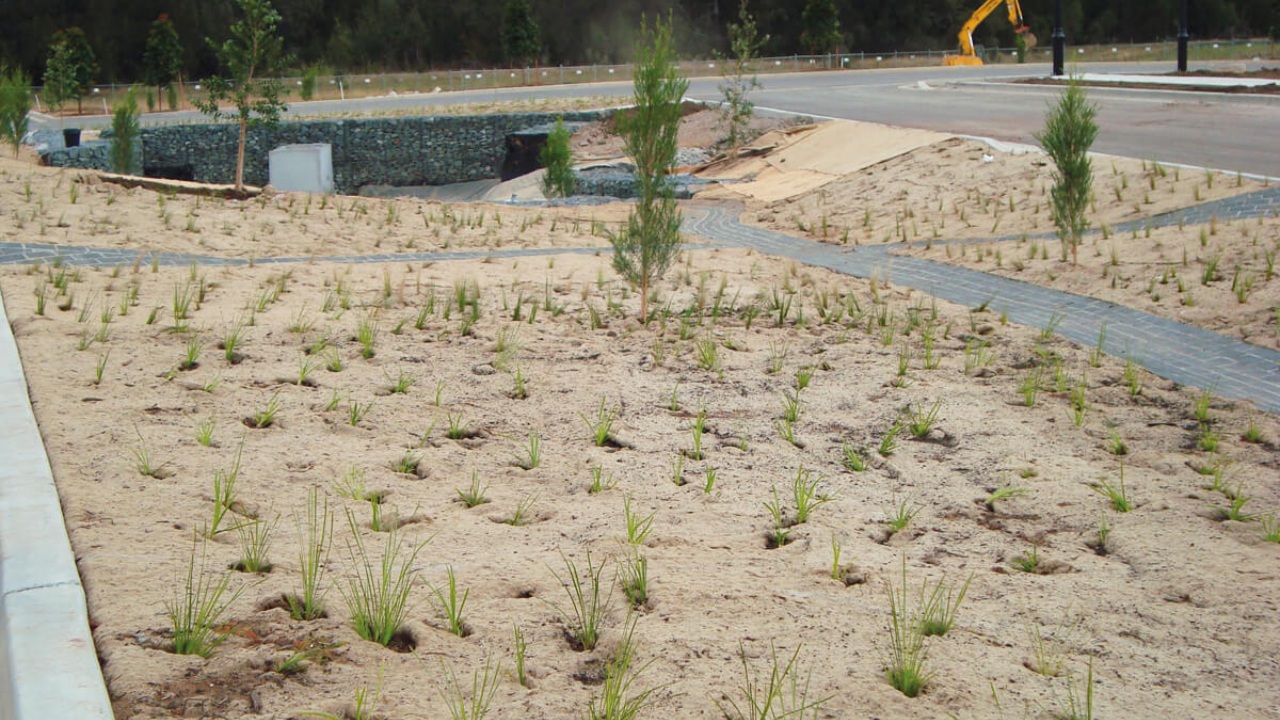Rehabilitating and stabilising an embankment typically involves the use of a geosynthetic material. This helps to prevent erosion and gives vegetation a chance to develop.
In the case of biodegradable geosynthetics such as coir and jute, the material that was initially placed on the embankment will eventually degrade into the environment, leaving the root structure of grasses and plants to act as a natural erosion control method.
Although natural materials such as coir and jute will biodegrade over time, they are often referred to as a permanent solution, because they enable vegetation to establish which in turn, provides a level of natural stabilisation to the area.
The decision on which geosynthetic to use – biodegradable or a non-biodegradable polymer – generally comes down to the tensile strength required, and the finished effect that the designer is looking for. And of course, with any project, it’s important to get a proper environmental assessment from an engineer to determine which product will give a reliable long term result.
If strong tensile strength is needed, a turf reinforcement mat or TRM is often the go-to solution, however, there are several applications where natural products like coir and jute can perform very well.
Hard to maintain areas
In hard to maintain areas such as along the verges and batters of a freeway, planting out native plants is often a better long term solution rather than using a synthetic material such as a turf reinforcement mat.
This is because turf reinforcement mats or TRMs are designed to encourage and support the growth of grass, which over time will need to be maintained.
Steep grades, hard to access slopes or dangerous areas are difficult to mow, meaning a TRM is likely not the best choice.
On the other hand, a biodegradable product such as jute matting may be more suitable as it can be slit in order to plant seedlings or jute matting which has loosely woven gaps where tube stock can be easily planted.
These planted out areas do not need the same level of maintenance as a grassed surface, which is why coir and jute matting products are often a great solution for hard to maintain areas.
Wetlands, creeks and slow-flowing channels
If the embankment in question features a creek or wetland area, coir matting may be a good choice as it is very resistant to rotting even when constantly exposed to water.
However, it’s important to note that coir doesn’t have the strength to withstand rapidly flowing water, so if sudden influxes or seasonal floods are likely, these forces can quickly destroy it. In this case, a TRM could be a better solution for river banks and fast flows.
Wetland areas and small creeks that are unlikely to experience flooding may be adequately supported with a coir mat product.
Get the right advice on biodegradable geosynthetics
In any case, the choice of product comes down to getting expert advice from the design engineer and your geosynthetics supplier.
For advice on the best solutions for stabilising embankments with biodegradable geosynthetics, get in touch with our expert engineering team on 1300 287 484.

